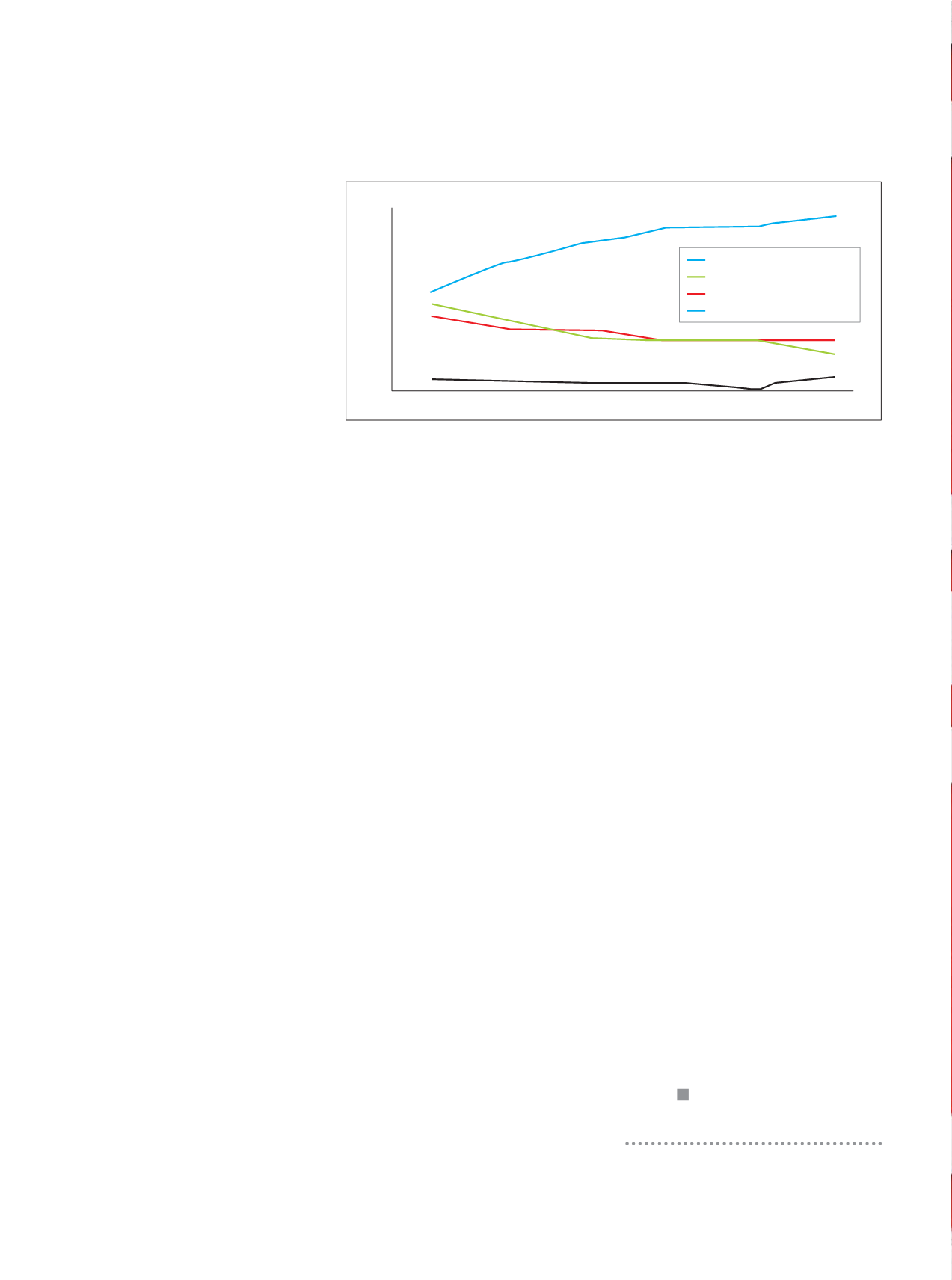

5 0
E L E CT R I C AL CONNE CT I ON
AUTUMN 2 01 5
Fire risk.
According to the Fire and
Emergency Services Authority in Western
Australia, 35 of 70 houses that burned down
in a catastrophic bushfire experienced fire
that started in the evaporative cooler unit
on the roof.
It is estimated that a substantial proportion
of the hundreds of houses destroyed in
Victoria’s Black Saturday fires had evaporative
coolers that ignited under ember attack.
Costly servicing.
A unit needs to be
serviced at least every two years and the pads
replaced every two to seven years. Servicing
starts at $200, and parts are usually required
at extra cost.
Home security.
It is difficult to secure a
dwelling with all the doors and windows
open, which is mandatory for these units.
Many householders shut up the house in
the evening, hoping that their evaporative
cooler will work. Without a free air-flow it
won’t.
Water leaks.
These systems can leak due
to pad failure, or neglecting to replace pads
early, which results in water damage. There is
also substantial risk in having the plumbing
connections above your lounge room.
Mould and damp.
This can result from
using an evaporative cooler, as the indoor
humidity rises to 80%.
It is a similar scenario to mould growth in
the bathroom or shower when the exhaust
fan has not been turned on.
Furthermore, the Victorian Government
states that evaporative coolers can cause
swelling to doors, doorframes and furniture.
Installation.
Often there is not enough
care taken to seal the perimeters of ceiling
vents. Coupled with an ineffective damper, or
no damper at all, this negates the building’s
thermal envelope. Householders will pay
much more for winter heating.
An air pressurisation test of 12 houses was
conducted by the building performance
company Efficiency Matrix. It showed that
40% of total building air leakage can be
attributed to conventional evaporative
coolers and 20% to the more expensive
units with a damper.
Space.
Evaporative coolers are bulky
and take up valuable space on the roof
that would be far better allocated to
solar panels.
A badly placed evaporative cooler
can block up to 3kW of the potential of
a continuous solar panel array. This is
equivalent to 30-50% of a household’s annual
electricity needs.
MODERN SOLUTION THAT WORKS
A quality reverse cycle air-conditioner can
pay for itself, because it not only cools but
also heats.
Heating with a reverse cycle unit can be
as much as 22 times cheaper (using your
own solar energy without exporting any
to the grid is the best case) than with gas
systems, which can lose about half their heat
to the atmosphere.
The United States Department of
Energy, California Energy Commission and
Sustainability Victoria estimate the running
cost of an evaporative cooler at half that of a
reverse cycle air conditioner in cooling mode.
However, such claims are misleading, as
they compare evaporative coolers with poor
performing air-conditioners rated at half the
efficiency of the best modern units.
When an evaporative cooler is compared
with a Daikin Ururu Sarara US7, for example,
or other air conditioners rated at six or seven
stars, the energy consumption is about the
same, but the cooling performance of the
Ururu Sarara is far superior. It achieves the
desired temperature set point that you dial
up on the remote and gives you the required
level of humidity for optimum comfort.
If you need further convincing that
evaporative cooling is on the way out,
analysis of the ABS Energy Use and
Conservation Surveys by TrueDemand shows
that evaporative cooling continues its decline,
and reverse cycle split systems are on the rise.
The US7 split system delivers a comfortable
and cool environment – not one that makes
you feel as though you are in a sauna.
US7 is modular, so as many indoor units
as needed can be installed and used as you
wish. For comfort the optimum level is 20-
24ºC and about 50% humidity.
On a 40ºC day with 50%humidity, as
is common inMelbourne, the best an
evaporative cooler will do is 34ºC and 80%
humidity. This is well outside the comfort zone.
Psychrometry deals mainly with the
mixture of water vapor and air due to its
application in heating, ventilation and air
conditioning, and meteorology.
For more information, check out our
website.
> Efficiency Matrix
www.efficiencymatrix.com.auSpace cooler market penetration. Source: ABS Environmental Issues: Energy Use and
Conservation 2014, 2011 and 2008 reports; TrueDemand analysis.
Reverse cycle / heat pump
Refrigerated
Evaporative
Other
70%
60%
50%
40%
30%
20%
10%
0%
1999
2002
2005
2008
2011
2014
















